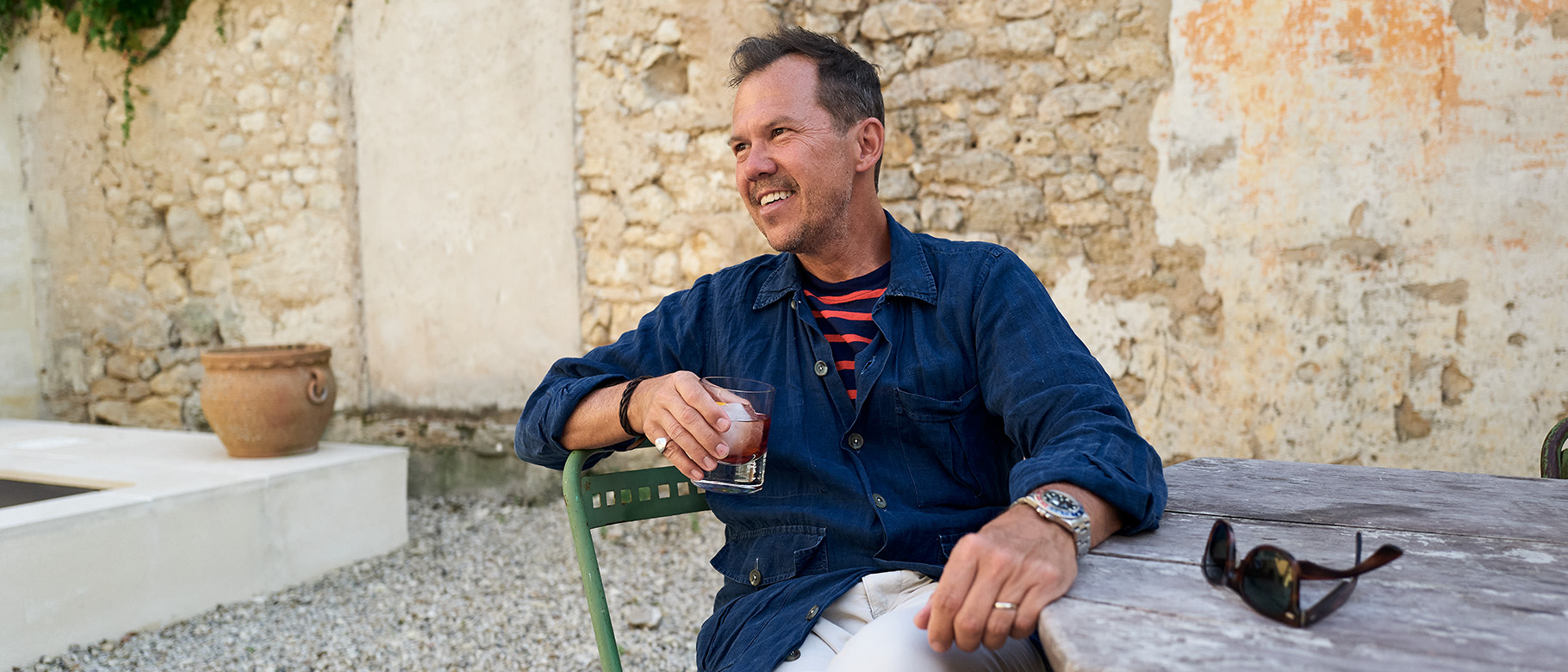

If you’re into menswear and you don’t know who Matt Hranek is, where have you been? Hranek is one of the most prolific figures in menswear; editor of WM Brown magazine, professional adventurer, eater, drinker and self-confessed ‘hustler’. He’s also the author of four books covering fine watches, classic cars and cocktails, and thanks to his enthusiasm on Instagram, he’s probably responsible for the Negroni becoming your favourite drink.
When we catch-up over Zoom, Hranek has flown from New York to his country house in Medoc, in western France, and will shortly be departing for Florence and then onto Rome. He never stops moving, and it seems he never stops working, either.
“The magazine [WM Brown, which has published 11 issues] has found its stride and its voice,” he says. “We’re working hard to make it better and better. I’ve also just finished the manuscript for a cookbook. It’s going to be a kind of food-meets-lifestyle book, which takes place around my farm in Upstate New York.”
Hranek’s obsessions, which range from collecting vintage Barbour jackets to devouring king-sized barbecues, are united by their rugged simplicity – he doesn’t really do frills. This philosophy extends to his wardrobe, which is built around unstructured tweed sports coats, denim shirts, Breton tops and preppy jeans. He’s also a sucker for an overshirt.
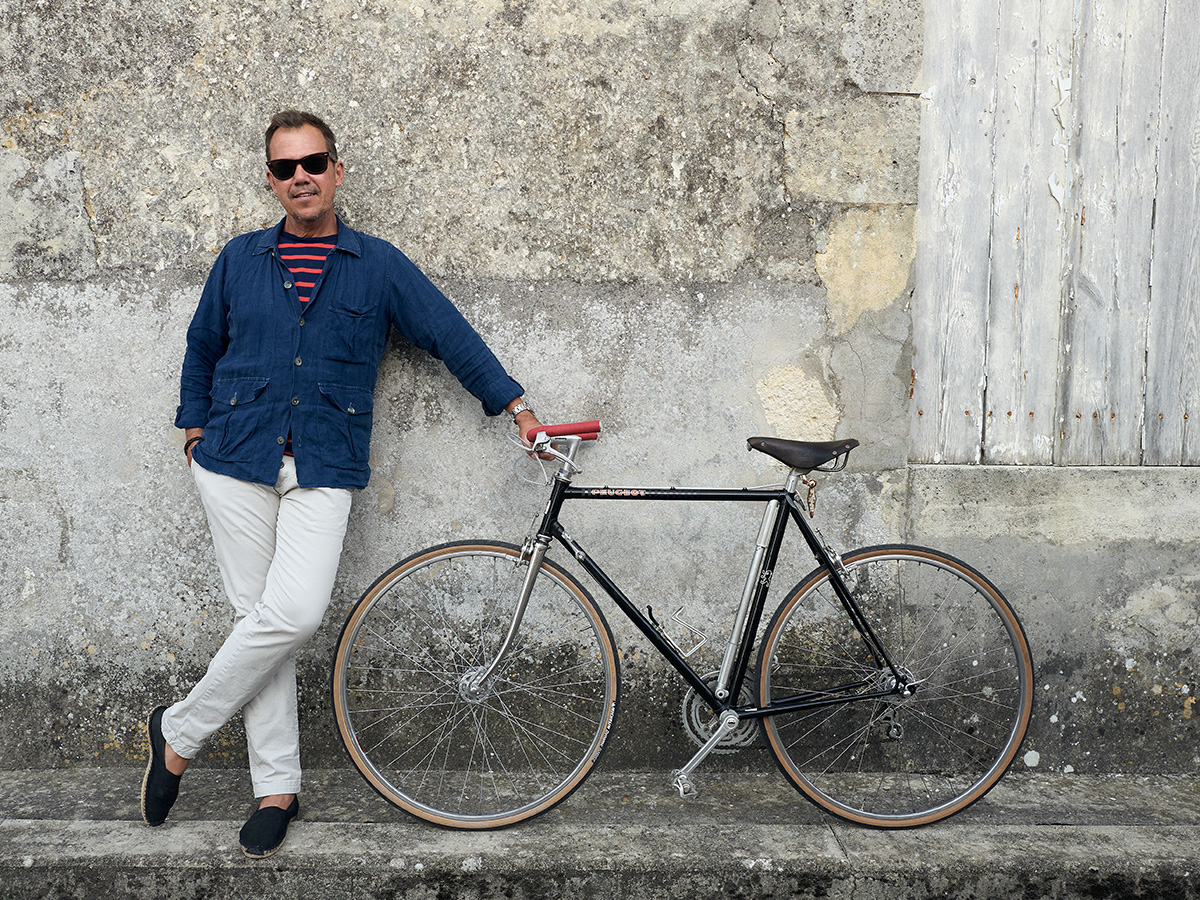
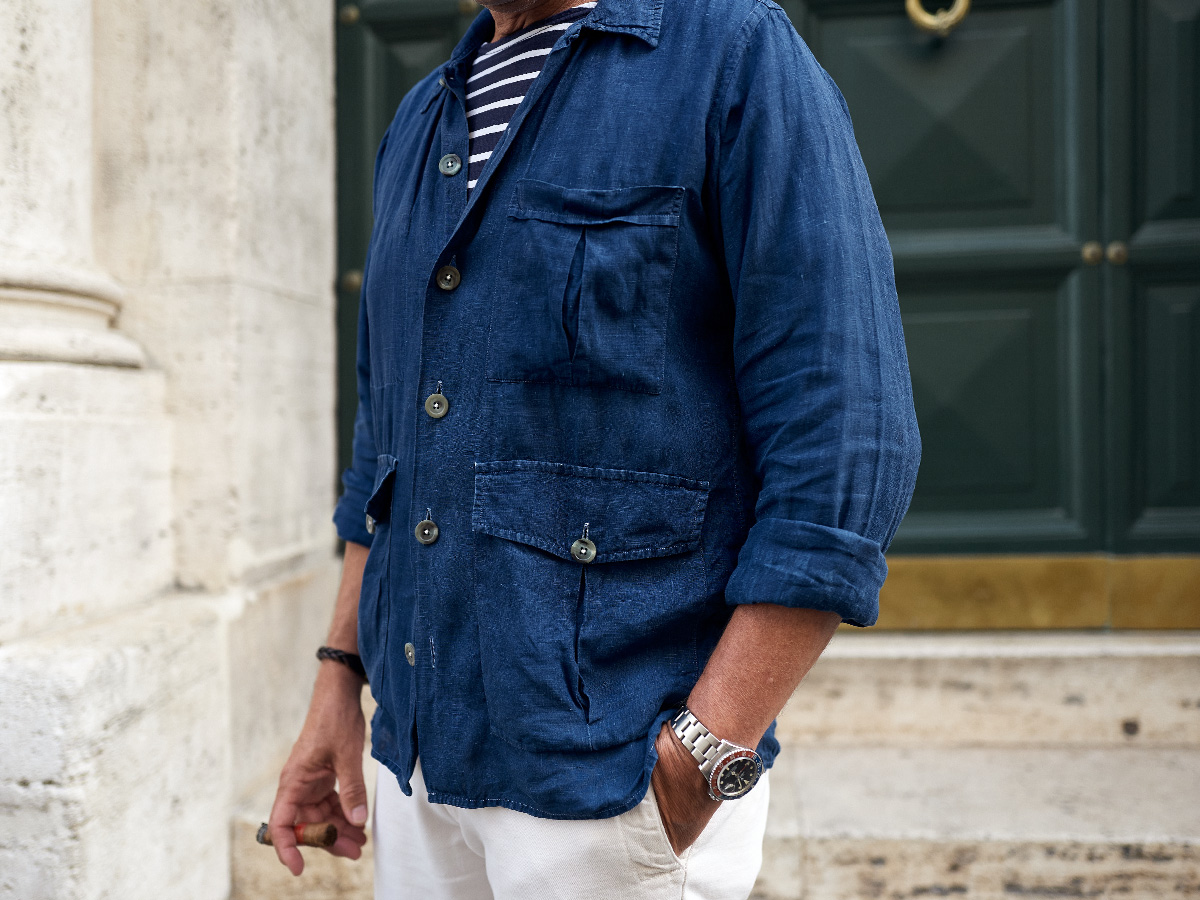
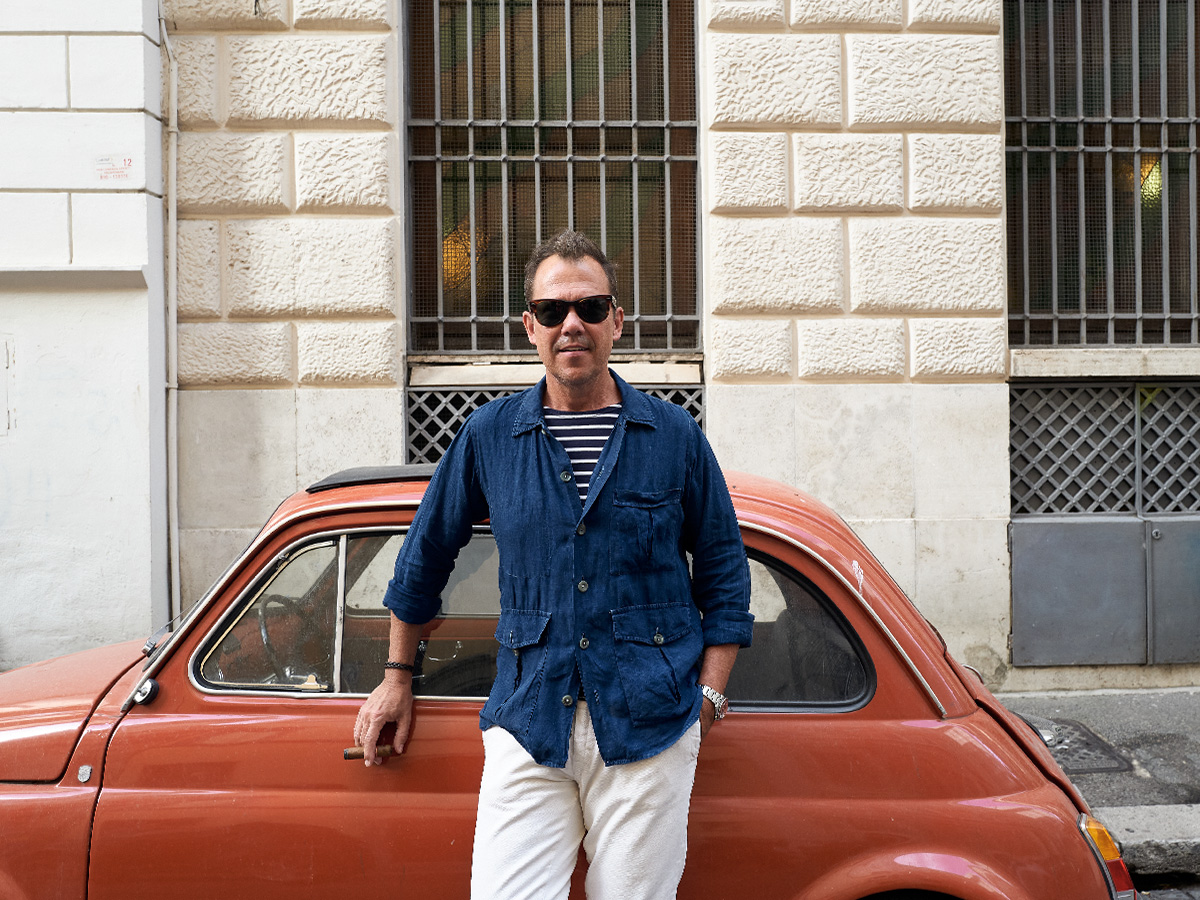
“I’ve always loved the safari jacket as a concept,” he explains, “but when Drake’s released their original overshirts a few years back, I was just like, ‘these are so great.’ They fit so well, they’re made from great material and they were so functional, thanks to all those pockets. You can run it through the X-ray machine and nothing falls out, or you can put a tie under it if you need to dress up.” Sounds great, but why have the same overshirts as everyone else, right?
“I went to a sample sale and they had a pile of them in white linen that just didn’t sell,” Hranek continues. “I put one on and liked the fit, but I felt like I worked for Doctors Without Borders. Thankfully, my wife Yolanda knew about this Japanese woman in Brooklyn who was doing all this beautiful indigo dying. I gave her one to dye, and I remember her saying, ‘I’ve never seen a fabric need so much indigo.’”
But dye it she did, and Hranek was so pleased with the results he’s got into indigo dying himself. Now, several of his overshirts are dyed in different shades of blue – ranging from a very dark shirt that’s faded, like this one, through to pieces in pale powder blue. This one though, is the well-worn original, and his personal favourite. “I find that I just live in it,” Hranek says.
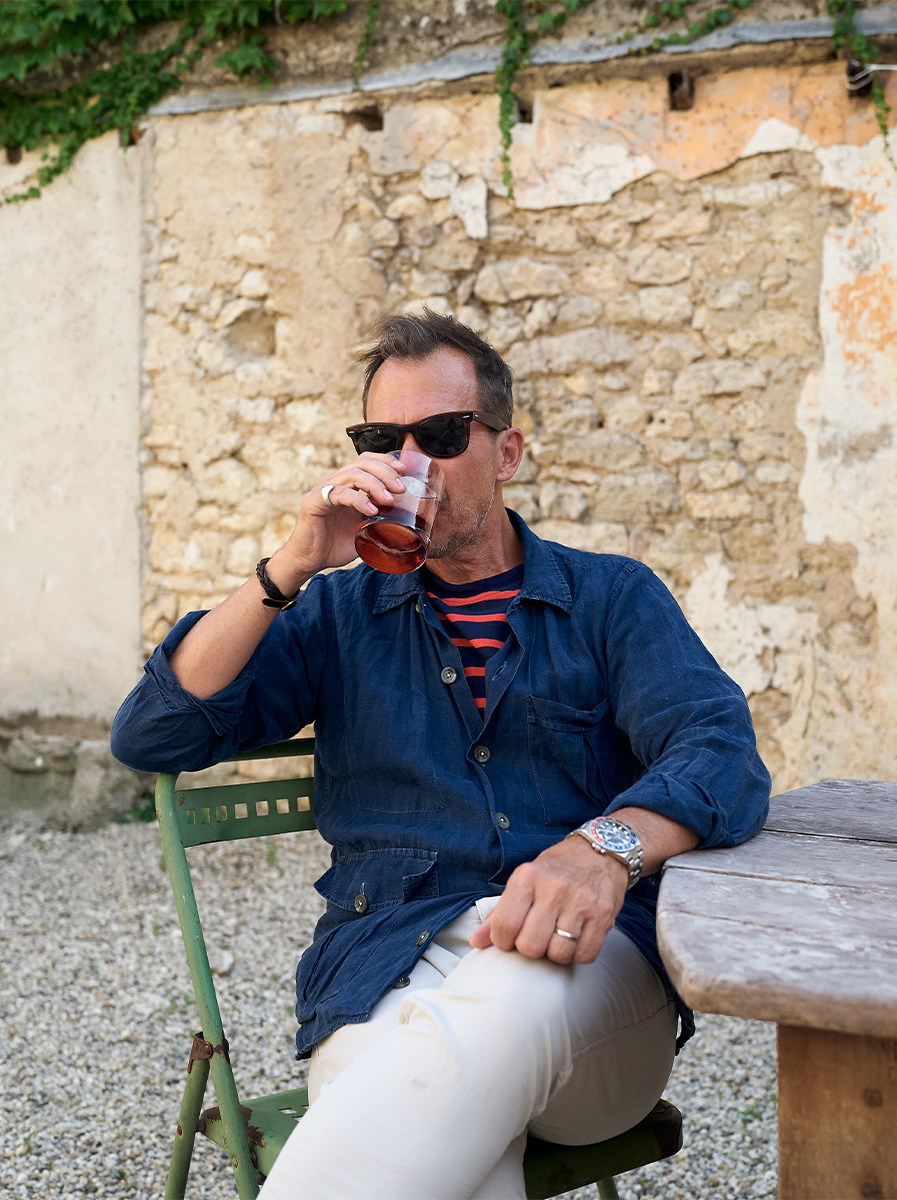
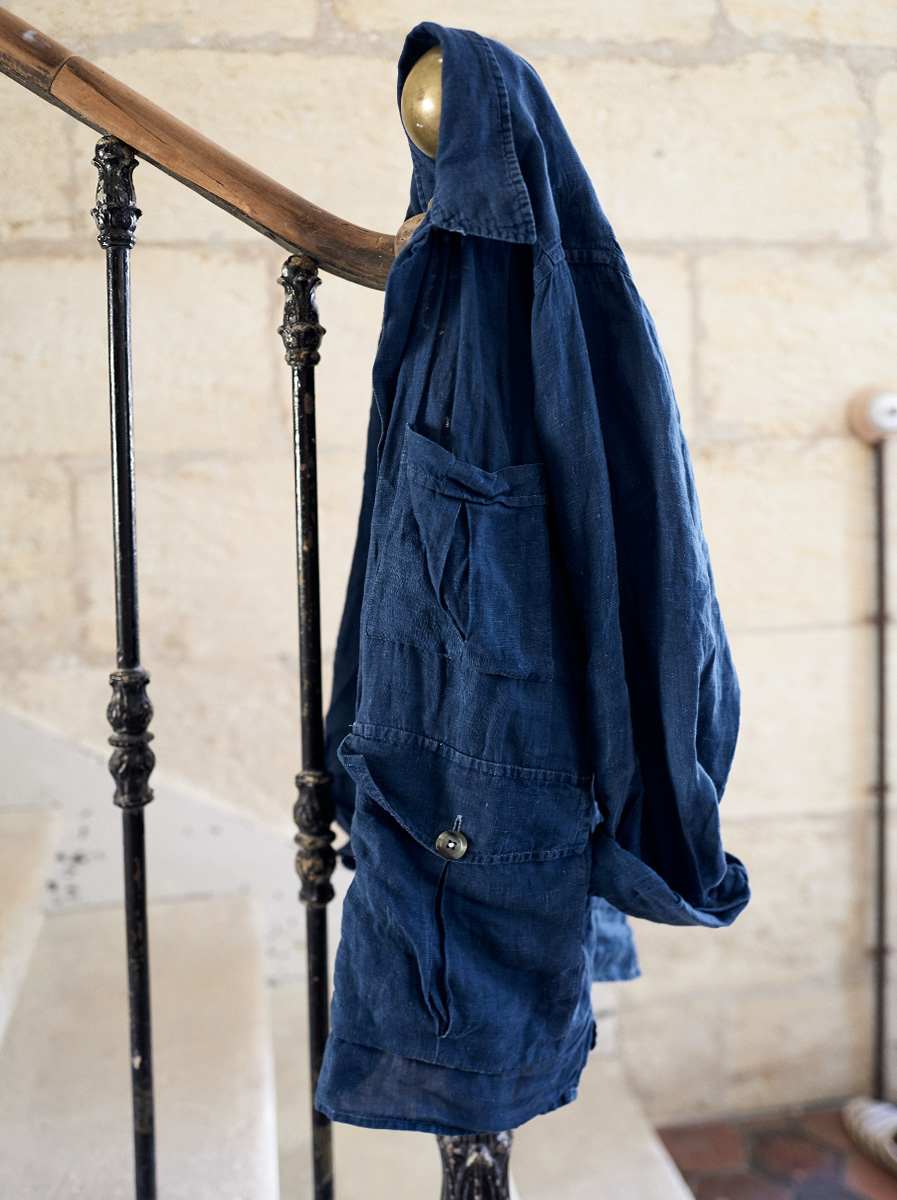
And, strangely enough, I feel quite attached to this overshirt too. It reminds me of an excellent afternoon in Bordeaux, some five years back. I was visiting the city to clear my head between jobs, and Hranek was at his place in Medoc. At the time, I was his commissioning editor at The Rake, so we met for lunch and he took me around a few of his favourite design stores. Ironically, I ended up buying an indigo dyed tote that day. I still remember that lunch fondly, and of course, Hranek arrived at the bistro in the very same newly-dyed indigo overshirt that he’d just got back from that Japanese dyer in New York.
It’s a habit that’s stuck. “Every summer, I dye clothes with a batch of indigo,” Hranek continues. “I dyed a bunch of batik that Jake Mueser found on 35th Street recently, and when you added the blue dye to the mustard cloth, it became this incredible shade of olive – he made me a blazer from it.”
The only downside? “You need a huge back yard, because the whole place and you will be covered in the stuff by the end of the day,” Hranek says. Looks like a sacrifice worth making, to me.
Photography by Clara Hranek

Get loose: André Larnyoh’s RRL cardigan
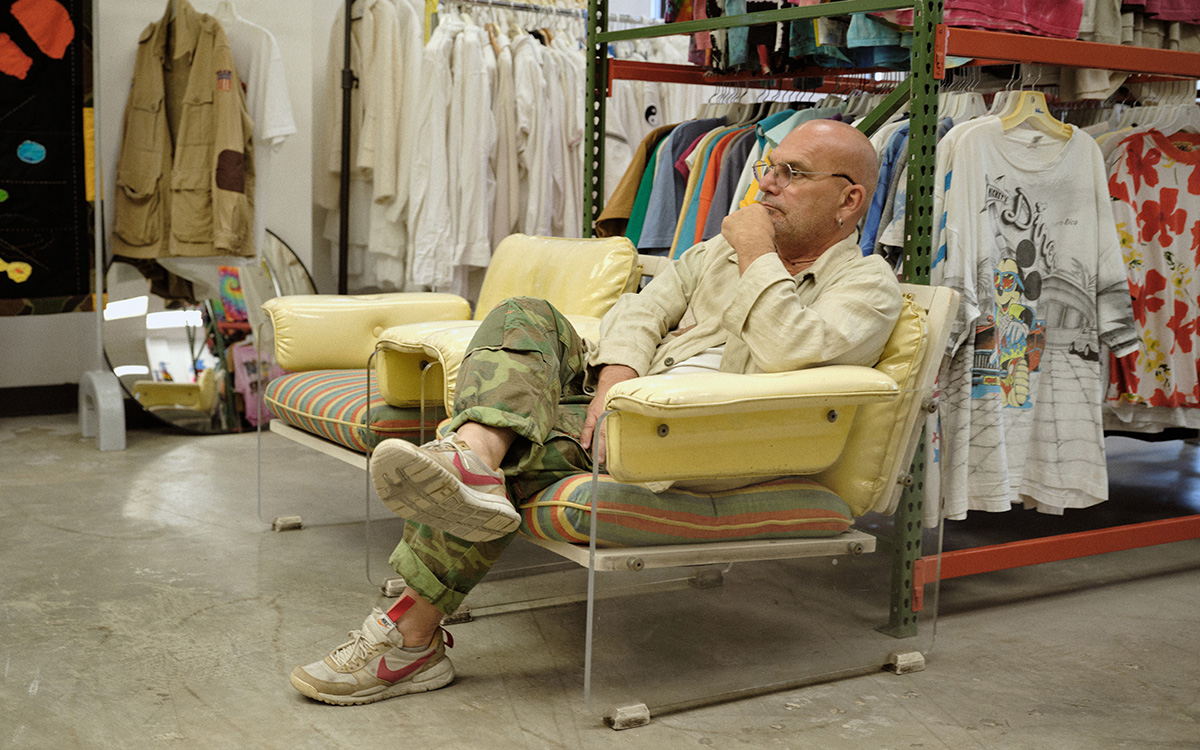
Maurizio Donadi’s camouflage fatigue pants
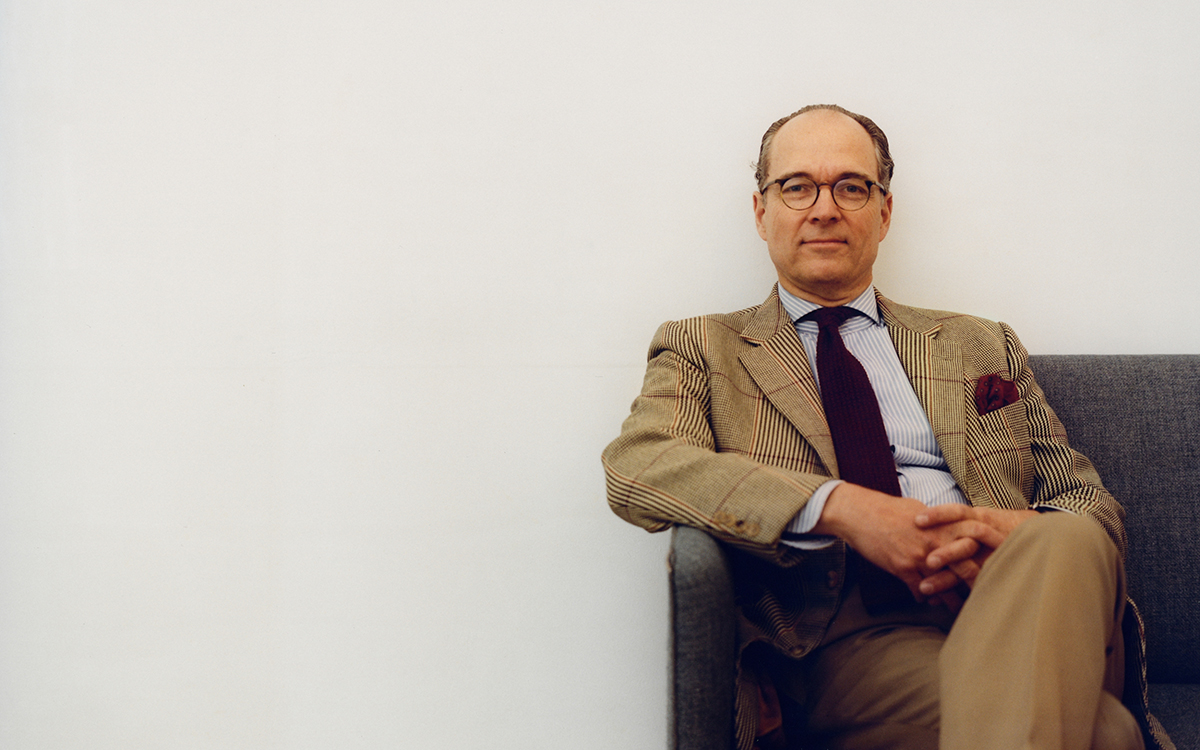
Bernhard Roetzel’s cherished tweed jacket
Cotonificio Albini S.p.A. - Via Dr. Silvio Albini 1, 24021 Albino (BG) – Italy
Società con unico socio - diretta e coordinata da Albini Group S.p.A.
P.I. 01884530161 - C.F. 08743540158 - Iscritta al Registro Imprese di Bergamo - REA 244649
Capitale sociale sottoscritto e versato € 11.170.960